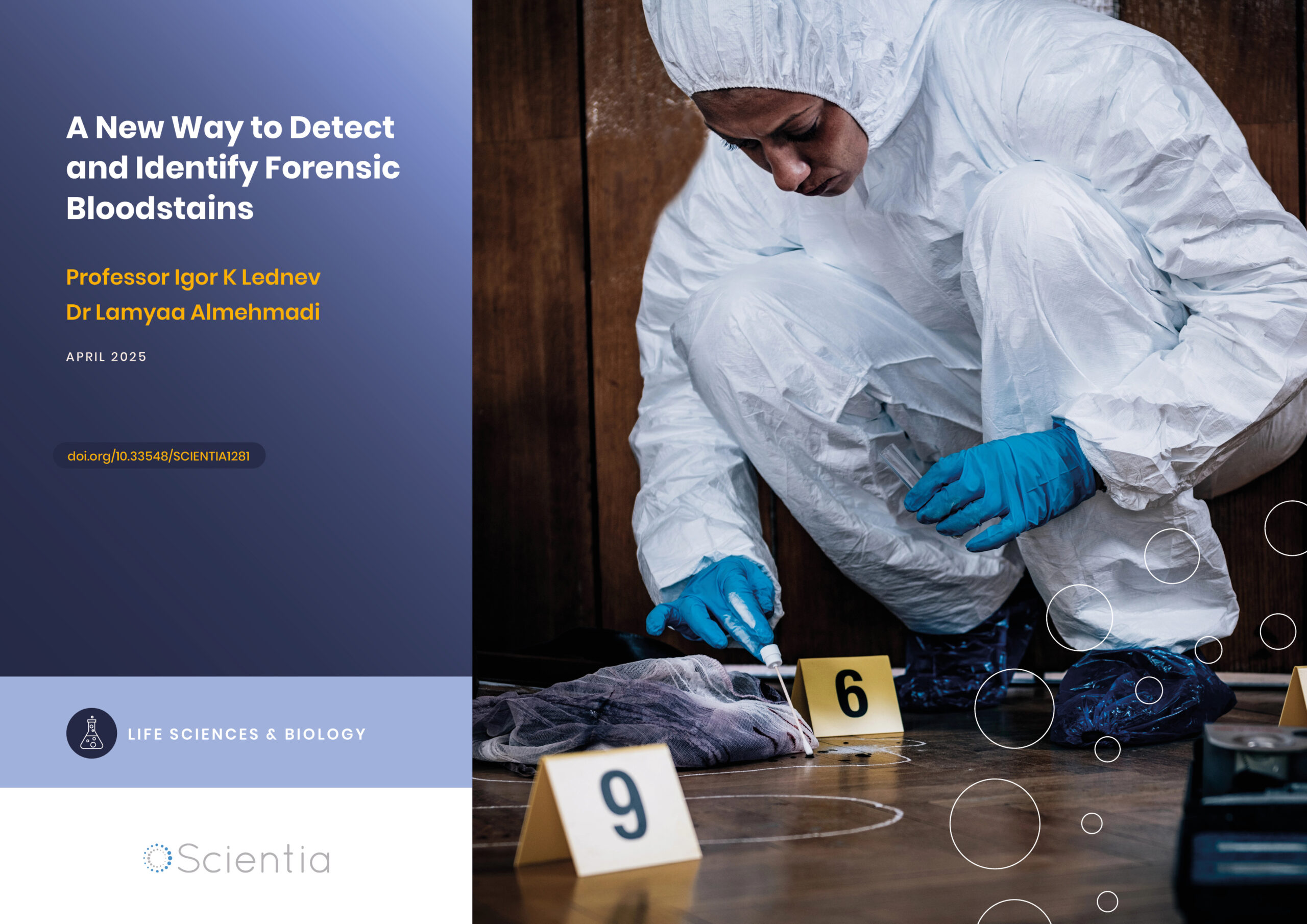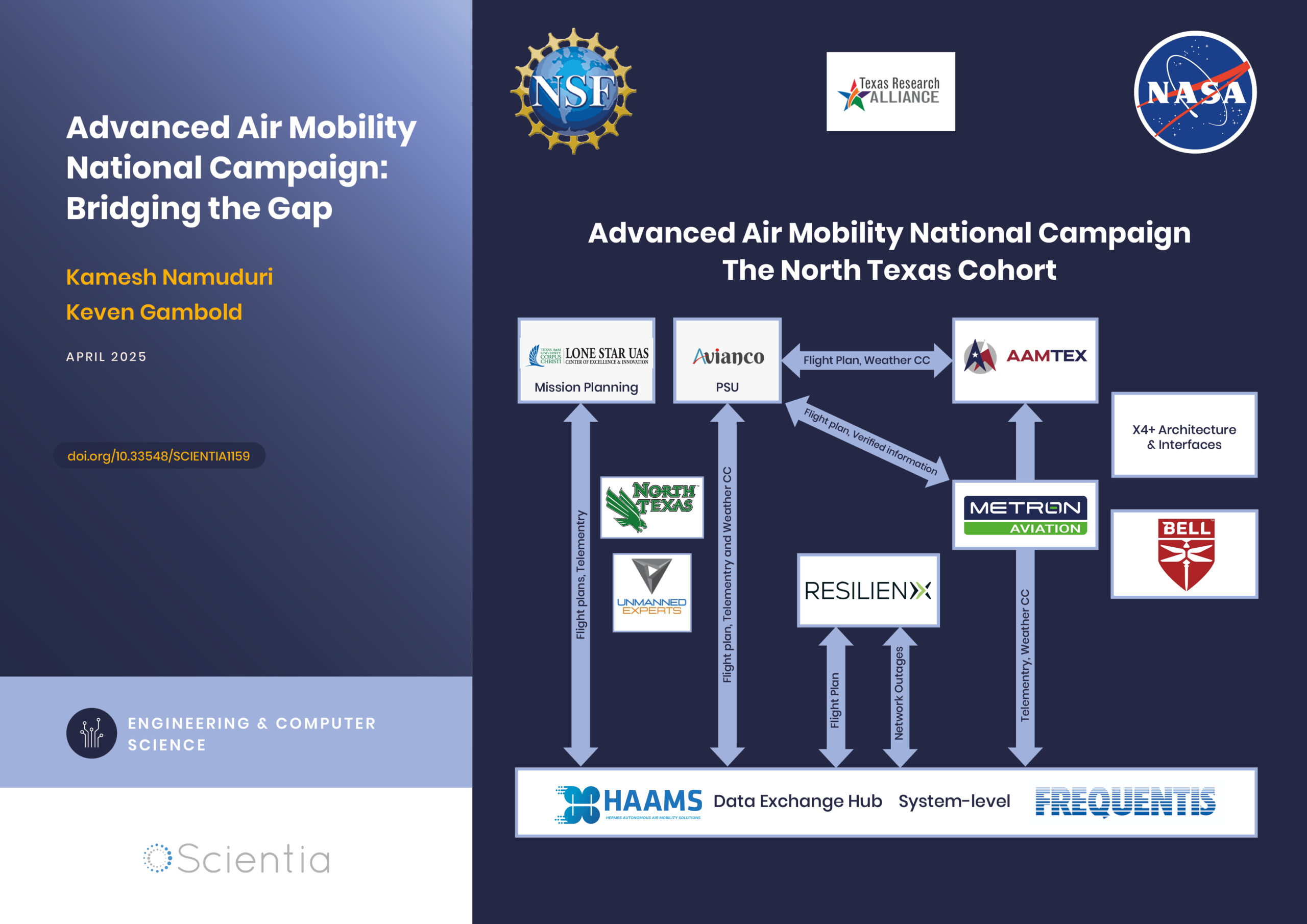Dr Paul Curtis | Dr Peter Smallidge | Dr Bernd Blossey | Kristi Sullivan – Protecting the Future Health of Forests in New York State
The white-tailed deer is an important part of North America’s forest ecosystems. However, large deer populations are now causing wide-scale habitat changes and threatening biodiversity, economics, and human health. Paul Curtis, Kristi Sullivan, Peter Smallidge and Bernd Blossey from Cornell University have developed new protocols for evaluating deer impacts on forest ecosystems and the ability of different forest areas to regenerate and retain their diversity. Where current methods for managing deer are failing, they consider how data related to deer browsing could provide the rationale for novel methods of reducing deer impacts to retain healthy forests.
The White-tailed Deer
The white-tailed deer is one of New York State’s largest mammals, and is an important part of forest ecosystems. Overexploitation and habitat changes resulting from agriculture and forestry practices almost wiped out the state’s deer population in the late 1800s. However, conservation efforts in the early 1900s and changes in hunting regulations helped deer herds rebound to a point where their abundance now has devastating consequences for forest plant communities, agriculture, and human health and safety – due to a higher prevalence of tick-borne diseases and deer-vehicle collisions. Furthermore, deer prefer forest edges, so populations now also thrive in suburban areas where lawns and fields are interspersed with forest patches, where fewer hunters and a lack of major predators allow deer populations to grow unchecked.
Gaps in the forest canopy allow light to reach plants on the forest floor, fostering species diversity. However, in many areas, deer browsing has become so intensive that North American forests are losing their previous biodiversity. Deer are selective browsers, and many of the tree species that they prefer to consume are valued for timber, or as food-producing trees for wildlife. Deer also eat wildflowers to a point that previously abundant species, such as orchids, have suffered dramatic population declines and have become rare, threatened, or endangered. The preference of deer for native wildflowers and tree and shrub seedlings also allows invasive plants and invasive earthworms to thrive. Changes in the shrub layer can reduce available food and habitat for other wildlife, including insects, small mammals, and songbirds.
When the variety of species in the forest declines, so does the way that forest ecosystems function. Fewer trees and herbaceous plants can grow to maturity and reproduce. Lack of reproduction or recruitment from juvenile stages (oaks and other trees) associated with high deer browsing may prevent the dispersal of tree and herbaceous species in response to climatic changes. This effect has large ecological and economic consequences for conservation and timber management, and limits potential for climate change mitigation through reforestation.
Landowners, foresters, and conservation and wildlife agencies across New York State are becoming increasingly concerned about deer impacts in their woodlands. However, reliably assessing the size and changes in local deer populations is extremely difficult, time consuming, and expensive. In addition, it typically requires individually marking deer. Also, there is no ‘one size fits all’ optimum deer density that exists for all areas. The ‘right’ number of deer a forest can support without substantial damage varies depending on factors including soil fertility, winter severity, and the amount of other food plants available.
To evaluate deer impacts on the state’s forest ecosystems, Paul Curtis, Kristi Sullivan, Peter Smallidge and Bernd Blossey from Cornell University and their colleagues have developed two different protocols that use vegetation indicators to assess deer browsing impacts. Evaluating deer impacts by measuring survival and growth of indicator plant species is a good way to assess whether deer populations are too high and threaten both the species and available habitat. These protocols are also useful for measuring the potential of different deer management approaches to reduce these threats.

CREDIT: Dr Paul Curtis
An AVID Audience
‘Any index of deer impacts should respond quickly to changes in the local deer populations and browsing pressure, be based on scientific evidence, and be easily and accurately applied by volunteers in different conditions,’ says Dr Smallidge. ‘That’s why we decided on spring wildflowers and tree seedlings as bioindicators. Spring wildflowers have been found to respond quickly to changes in deer browsing pressure, and are effective indicators under a variety of conditions. Woody seedlings are available as a measurement tool all year, and have been popular with those interested in tree regeneration.
One of the new methods for rapidly evaluating deer impacts on forest vegetation appropriate for volunteers, foresters, landowners, and others is known as ‘AVID’: Assessing Vegetation Impacts from Deer. The researchers recruited volunteer landowners and land managers from across the state, running training courses and producing educational materials, to enable them to begin to collecting data on their land. The volunteers collect information by individually tagging and repeatedly measuring tree seedlings that are known to be preferred and non-preferred by deer. In addition, the protocol asks for tagging and measuring certain species of wildflowers broadly distributed and preferred by deer – for example, Trillium grandiflorum or Trillium erectum, and Indian cucumberoot.
‘The focus of this project is on helping local landowners and land managers recognise and understand the changes that are happening on their land – enabling them to play a role in local and state-wide deer management efforts,’ says Dr Curtis. Volunteers can enter data online on the AVID website, and through a mobile app developed to provide field portability of the resources developed as part of the project.
Data collected by landowners using the AVID protocol have provided important insights into forest regeneration under the pressure of deer browsing. The team found that the annual average growth of desired tree species, such as maple, ash and oak, is less than one inch (2.5 cm) per year when unprotected from deer. They also found that the average annual height growth of unprotected, less preferred tree species, such as hop-hornbeam and beech that have little utility in the forest industry, may be ten times greater than that of unprotected valuable timber species – reaching more than five inches (12.7 cm) of growth per year.
Standardisation and Legacy Effects
The AVID protocol uses existing plants in forests. However, forests may differ in their tree and herbaceous species composition, even those in close proximity. Decades of high deer abundance have fundamentally changed which species are retained in a forest. This leads to difficulties when foresters, management agencies, or conservation organisations want to assess deer impacts at the landscape level, or compare threats on different parcels of land. Also, in some heavily-impacted forests, including those in suburbia, there may be few native species, creating difficulties in finding enough individuals to tag for repeated measurements.
To provide a common indicator, the team uses repeated plantings of red oak seedlings, or so-called ‘sentinels’, to evaluate deer impacts on plants, and the efficacy of management practices, including deer fertility control and hunting. They found that oak seedlings protected in cages grew well, but deer ate over 60% of unprotected seedlings each year. They also found that neither sterilisation of female deer, nor recreational hunting, sufficiently reduced browsing rates. Consequently, these techniques were eliminated as appropriate management practices in their study. Instead, they found that allowing volunteer archers to shoot deer in a culling programme resulted in a substantial reduction in the population.
The researchers found that planting oak seedlings as bioindicators was a useful and easy-to-implement protocol to assess deer browsing pressure. However, additional indicator species are needed because browsing rates on more sensitive species of conservation interest, such as trilliums and orchids, may still be excessive, when oak seedlings are not being browsed. The team is currently experimenting with asters and goldenrods to better gauge how deer browsing pressure differs among woody and herbaceous species in the same forest.

CREDIT: Martin Feehan
A Holistic Approach
Data collected using the AVID protocol is intended to be used to aid in deer management decision-making in New York State. The project team’s aim is to achieve a network of AVID participants collecting data from more than 2300 sites by 2024, and they are looking at ways of implementing strategies to incentivise sustained annual monitoring. However, it is also imperative to further assess whether this method alone is sensitive enough to capture changes in deer browsing pressure in response to changes in deer management. AVID, as designed, cannot assess deer legacy effects because the protocol relies on existing individuals. This is where AVID, potentially in combination with the oak sentinel approach, can help to establish what sustainable deer browse levels might look like in different geographic areas. For example, under low-intensity deer browsing, the death rate of oak seedlings is low: 20% over a 6-year period in Wisconsin, and 3% per year in the Appalachian Mountains. However, annual browsing rates of oak seedlings exceeding 10–15% are unlikely to allow this species to regenerate, and oaks need at least a decade to grow tall enough to avoid being eaten by deer.
Acceptable rates of deer browsing for regenerating oak seedlings will likely need to be reduced even further in order to protect more sensitive plant species. ‘Wildflowers such as Trillium grandiflorum continue to suffer browsing rates that will lead to local extinction, even in areas where browsing rates of oak seedlings fall below 15%,’ Dr Blossey says. ‘We recognise that using oak sentinels alone will not suffice and that additional indicator species, like those used in the AVID project, will need to be used in assessments once deer populations have declined through control methods.’ Therefore, the team is experimenting with additional sentinel plantings and long-term monitoring of individuals to be able to come up with future recommendations to landowners and management agencies.
As is illustrated by the team’s research, deer numbers cannot be controlled through fertility control and recreational hunting alone – at least not to the levels required for sustainable forest regeneration and conservation of herbaceous species. Recovery requires substantial reduction in deer herds, but any drastic changes in deer management, such as the introduction of predator species, are likely to be controversial. The researchers believe that their research is now providing the background data required to guide changes in landscape management and forest stewardship. Their work provides an evidence-based approach for making deer management decisions – a potentially emotive subject.
At Cornell University’s Arnot Forest, the team is now also working on a new project to examine the potential of novel timber harvesting techniques, which involves the use of logging debris, or slash, to create walls that exclude deer. They plan to evaluate the impact that such techniques could have on regenerating forests, and maximising forest carbon storage. Initial results from the team’s experiments using these ‘slash walls’ are promising, but further research into the dynamics of forest regrowth and carbon sequestration utilising such techniques is needed.
It is clear from the breadth and depth of the team’s research that overall, a holistic approach to deer management is necessary to promote forest regeneration in New York State and across the eastern US as a whole. Any such approach should be based on data from initiatives such as the AVID and oak sentinel protocols, and take into account ecological, social, human health, and economic metrics to create a portfolio of indicators that can guide effective decision-making in deer and landscape management. The researchers conclude that: ‘The future of our forests, the biodiversity contained in them, climate change mitigation, and human health, are closely linked to our ability to embrace these large-scale changes in deer management.’
Reference
https://doi.org/10.33548/SCIENTIA501
Meet the researchers

Dr Peter Smallidge
Department of Natural Resources
Cornell University
Ithaca, NY
USA
Dr Peter Smallidge holds a PhD from the State University of New York College of Environmental Science and Forestry. He is now based at Cornell University, where he is the NYS Extension Forester and Director of Cornell’s Arnot Teaching and Research Forest. Here, Dr Smallidge runs an extension programme called ‘ForestConnect’, which aims to provide state-wide leadership for educational, research-based programmes that address the stewardship and sustainable production needs of forest management. His overall professional goal is to integrate extension and research in support of productive and healthy forest ecosystems in New York and the Northeastern United States.
CONTACT
E: pjs23@cornell.edu
W: http://blogs.cornell.edu/cceforestconnect/

Dr Paul Curtis
Department of Natural Resources
Cornell University
Ithaca, NY
USA
With a PhD in Zoology from North Carolina State University, Dr Paul Curtis is now a Professor in the Department of Natural Resources at Cornell University. He has coordinated the Wildlife Damage Management Programme at Cornell for the past 30 years, which focuses on reducing conflicts, economic losses and human health and safety concerns caused by wildlife in both rural and suburban landscapes. His work includes wildlife fertility control and population management, community-based wildlife management issues and public education. Dr Curtis is also testing novel methods for reducing wildlife damage to agricultural crops and forest regeneration.
CONTACT
E: pdc1@cornell.edu
W: https://dnr.cals.cornell.edu/people/paul-curtis/

Dr Bernd Blossey
Department of Natural Resources
Cornell University
Ithaca, NY
USA
Dr Blossey holds a PhD in Ecology from The Christian Albrechts University in Germany. He is now an Associate Professor in the Department of Natural Resources at Cornell University. Over the past 30 years, he has implemented biological weed control programs targeting invasive species across North America and studied invasive plant impacts. During the past 15 years, he has focused on assessing impacts of stressors in forest ecosystems, including invasive plants, deer, and introduced earthworms. He is the chair of Cornell University’s deer management committee, and has assisted local communities in implementing their own deer management approaches. An important aspect of his work involves developing assessment protocols to gauge effectiveness of management approaches.
CONTACT
E: bb22@cornell.edu
W: http://invasiveplants.net/

Kristi Sullivan
Department of Natural Resources
Cornell University
Ithaca, NY
USA
Kristi Sullivan holds a Master of Science degree in Wildlife and Fisheries Science, and is a Certified Wildlife Biologist. She currently works as an Extension Associate in the Department of Natural Resources at Cornell University. She works with private forest landowners, land managers, natural resource professionals, and educators to encourage and support practical approaches for conserving wildlife and biodiversity for current and future generations. Kristi also serves as Director of the New York Master Naturalist volunteer program. To complement her Extension program, her research focuses on developing practical methods for managing and restoring forest habitats, and determining effective means for sustaining and conserving native wildlife in the face of environmental change.
CONTACT
E: kls20@cornell.edu
W: https://dnr.cals.cornell.edu/people/kristi-sullivan/
KEY COLLABORATORS
Tracey Testo, Extension Educator, Agroforestry Resource Centre
Jeremy Hurst, Big Game Program Leader, NYS Department of Environmental Conservation
Michael Ashdown, Research Technician, Cornell University
Jacqueline Frair, Professor, SUNY College of Environmental Science and Forestry
Martin Dovciak, Associate Professor, SUNY College of Environmental Science and Forestry
Andrea Davalos, SUNY Cortland
Jason Boulanger, University of North Dakota
Victoria Nuzzo, Natural Area Consultants
Brett Chedzoy, Cornell Cooperative Extension of Schuyler County
FUNDING
Cornell University Agricultural Experiment Station
Cornell University Cooperative Extension
DoD, Strategic Environmental Research Development Program
NYS Department of Environmental Conservation
USDA-NIFA, Hatch
USDA-NIFA, Smith-Lever
FURTHER READING
The AVID website: http://aviddeer.com/
B Blossey, P Curtis, J Boulanger, A Davalos, Red oak seedlings as indicators of deer browse pressure: Gauging the outcome of different white-tailed deer management approaches, Ecology and Evolution, 2019, 9. https://onlinelibrary.wiley.com/doi/full/10.1002/ece3.5729

Creative Commons Licence
(CC BY 4.0)
This work is licensed under a Creative Commons Attribution 4.0 International License. 
What does this mean?
Share: You can copy and redistribute the material in any medium or format
Adapt: You can change, and build upon the material for any purpose, even commercially.
Credit: You must give appropriate credit, provide a link to the license, and indicate if changes were made.
More articles you may like
International Isocyanate Institute | TDI-induced Asthma: Reanalysing Data to Find Hidden Trends
Even if you’ve never heard of them, you’ve used polyurethanes. Producing them requires toluene diisocyanates, which may/can induce asthma when inhaled. A 5-year study claimed to conclude that cumulative TDI exposure over time was indicative of asthma incidence. However, a reanalysis by a team at the International Isocyanate Institute points the finger instead at the frequency of unprotected high-exposure events, like accidental spills or plant maintenance. This finding guides the way for future advances in worker safety.
A New Way to Detect and Identify Forensic Bloodstains
Accurately identifying bodily fluids at crime scenes is vital to aid forensic examinations and obtain information for use in criminal proceedings. However, collecting viable material for analysis can be challenging, especially if samples are difficult to access or the amount is minute. Dr Lamyaa Almehmadi and Professor Igor K Lednev at the University at Albany, State University of New York, USA, have introduced a new technique to assist in analysing bloodstains for forensic examination without compromising sample integrity.
Advanced Air Mobility National Campaign: Bridging the Gap
The rapid advancements in technology have paved the way for revolutionary changes in transportation, particularly air mobility. One such groundbreaking initiative is the Advanced Air Mobility (AAM) National Campaign led by NASA. This campaign aims to integrate advanced air mobility solutions into the existing transportation infrastructure, creating a seamless, efficient, and safe urban air transportation system. By addressing the various challenges associated with urban air mobility, the AAM National Campaign is poised to redefine how we navigate our cities, ultimately leading to reduced congestion, improved accessibility, and enhanced environmental sustainability.
Dr Niloofar Vardian | Mapping the Unknown: Inside Black Holes
Dr Niloofar Vardian at the SISSA school has advanced our understanding of black hole interiors through precise mathematical modelling. Her recent publication sheds light on previously inaccessible aspects of black hole dynamics, deepening our knowledge of these mysterious and difficult-to-study phenomena.




